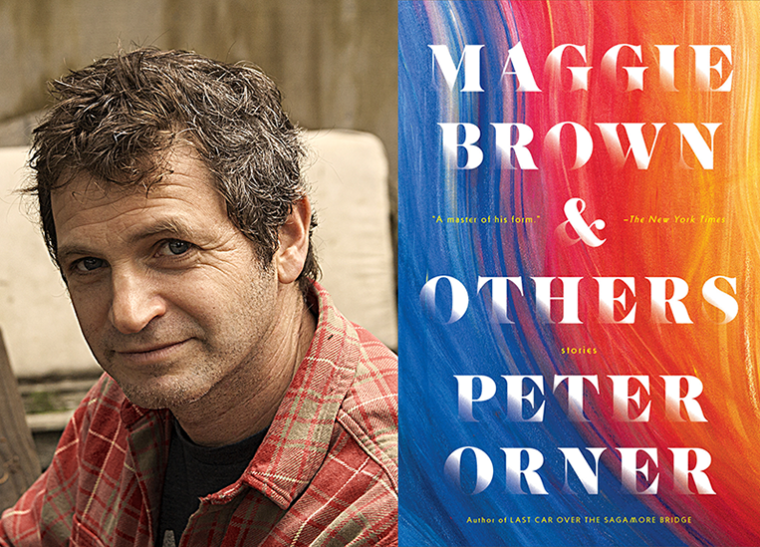This week’s installment of Ten Questions features Peter Orner, whose story collection Maggie & Other Stories is out today from Little, Brown. Forty-four interlocking stories—some as short as a few paragraphs, none longer than twenty pages—are paired with a novella, “Walt Kaplan Is Broke,” that together form a composite portrait of life so intricately drawn, line by line, strand by strand, that it shimmers with the heaviness and lightness of the human experience. As Yiyun Li wrote in her prepublication praise, “This book, exquisitely written, is as necessary and expansive as life.” Peter Orner is the author of two novels, The Second Coming of Mavala Shikongo and Love and Shame and Love, and two story collections, Esther Stories and Last Car Over the Sagamore Bridge. His latest book, Am I Alone Here?, a memoir, was a finalist for the National Book Critics Circle Award. Orner’s fiction and nonfiction has appeared in the New York Times, the Atlantic Monthly, Granta, the Paris Review, McSweeney’s, the Southern Review, and many other publications.

Peter Orner, author of Maggie Brown & Other Stories. (Credit: Pawel Kruk)
1. How long did it take you to write Maggie Brown & Others?
Hard to say. Stories come slow and I try not to force them. One, “An Ineffectual Tribute to Len” I began in 1999. Many of the others I carried around for years before I managed to put them right, or sort of right. The novella took about ten years.
2. What was the most challenging thing about writing the book?
For me the stories in a collection should be both disparate and—somehow—cohesive. Cohesive isn’t the right word. They should talk to each other, I guess is what I’m trying to say. And I like for stories to talk to each other across generations, across geography. So they can’t all be speaking in the same voice, and yet, like I say, they’re communicating, or at least trying to. This takes years and a lot of fiddling, in the sense of fiddling as tinkering—and fiddling as in fiddling around, riffing, etc. (I flunked violin, but I still have aspirations.)
3. Where, when, and how often do you write?
Whenever I’m not reading, and I read all the time. I squeeze some of my own stuff inbetween. Mornings are the best when my head is a little less cluttered.
4. What was the most unexpected thing about the publication process?
Though this is my sixth book, I take nothing for granted. When the book comes in the mail I’m still astonished by the physicality of it. For days I walk around with it, sleep with it. It’s weird. I wish I wasn’t serious.
5. What are you reading right now?
The poetry of Ada Limón.
6. Which author, in your opinion, deserves wider recognition?
Randal Kenan, author of Let the Dead Bury Their Dead, a seminal story collection published in the early ’90s.
7. Do you recommend writers pursue an MFA?
It’s like asking, “So, should I marry this guy?” Well, I dunno. Is he kind? How about the snoring? If the question is, does a writer need an MFA? No. Can it help to be surrounded by other neurotics who love literature? Sometimes. Sure. Doesn’t make it any less lonely though, which as it should be.
8. What has changed about your writing process over the years, since writing your first book?
If anything, I feel less confident than ever I’m going to be able to make a story work. Back around the time of Esther Stories I remember days when I felt I could make a story out of anything. I was kidding myself, but sometimes kidding yourself tricks you into working harder.
9. What is the biggest impediment to your writing life?
Myself, myself, myself.
10. What’s the best piece of writing advice you’ve ever heard?
My old teacher and friend Andre Dubus would often say: “You got to walk around with it. Walk around with it. You’ll get it.” He meant, in a sense, that sometimes you got to get up and leave the story, walk around, live a little—and when you least expect it, there’s your ending.







